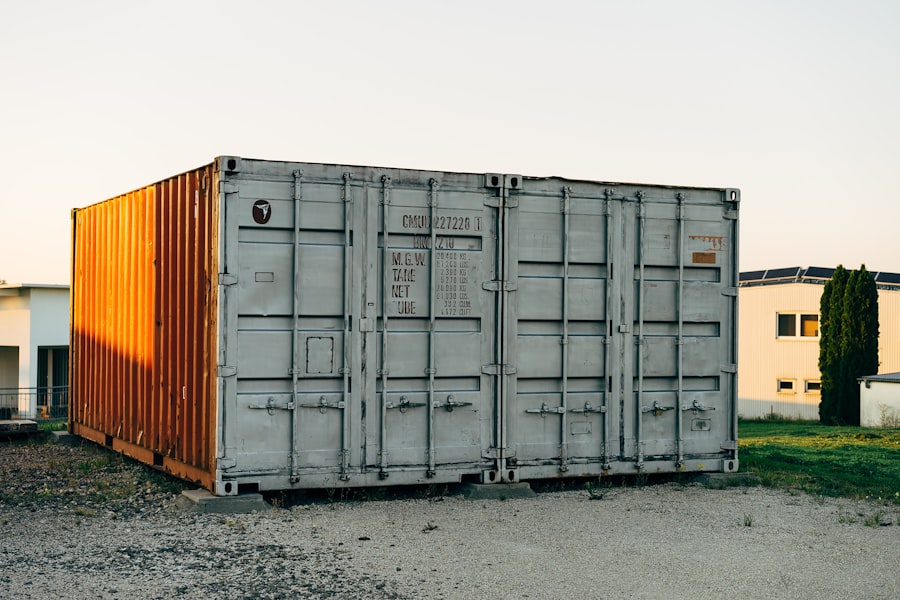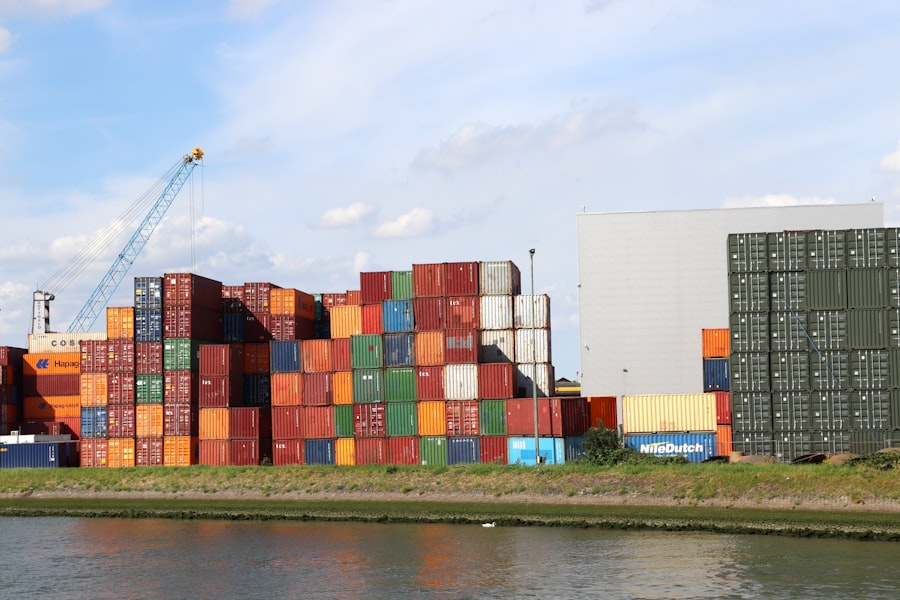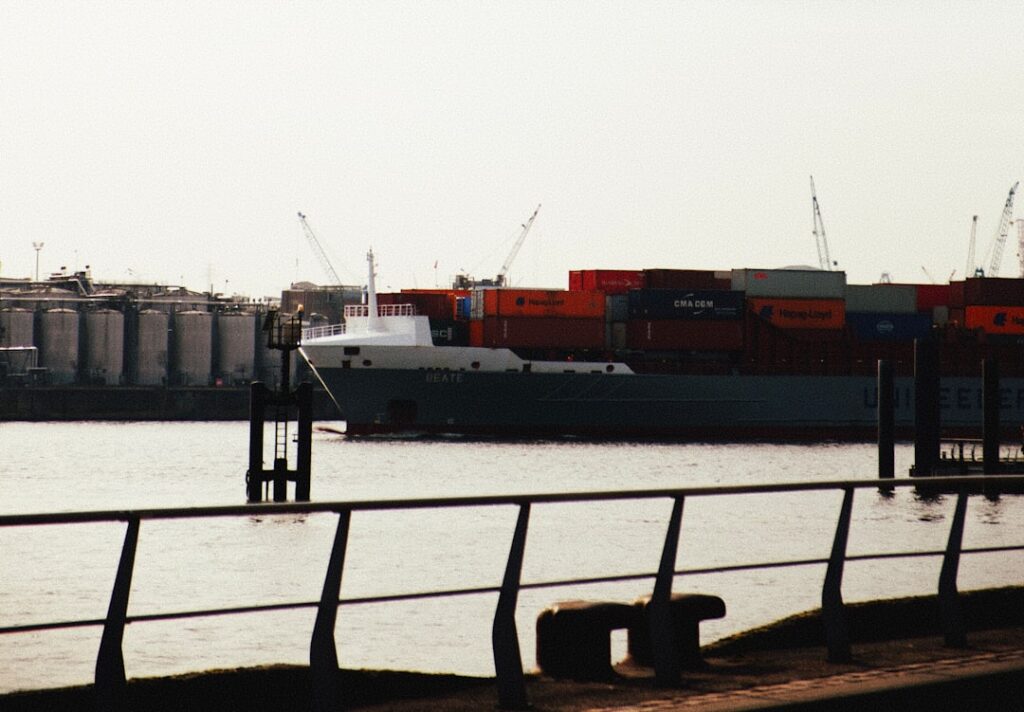As I delve into the world of software development and deployment, I find myself increasingly drawn to the concept of containerization, particularly through Docker. Docker has revolutionized the way applications are built, shipped, and run by providing a lightweight, portable, and efficient environment for developers. The essence of Docker lies in its ability to encapsulate an application and its dependencies into a single unit known as a container.
This not only simplifies the deployment process but also ensures that applications run consistently across various environments, from development to production. The Docker container environment is built on the principles of isolation and resource efficiency. Each container operates independently, allowing me to run multiple applications on the same host without conflicts.
This isolation is crucial for maintaining stability and security, especially in complex systems where different applications may have varying requirements. Moreover, Docker’s ability to leverage the host operating system’s kernel means that containers are lightweight compared to traditional virtual machines, which require their own operating systems. This efficiency allows me to maximize resource utilization while minimizing overhead.
Key Takeaways
- Docker is a popular containerization platform that allows for easy deployment and management of applications.
- Installing Docker on Amla Linux is a straightforward process that involves adding the Docker repository and installing the Docker engine.
- Configuring Docker on Amla Linux involves setting up user permissions, managing Docker daemon options, and configuring Docker storage.
- Creating and managing Docker containers on Amla Linux can be done using the Docker CLI, and involves tasks such as running, stopping, and removing containers.
- Networking and security in Docker containers on Amla Linux can be managed using Docker networking features and implementing best practices for securing containers.
- Docker Compose is a tool for defining and running multi-container Docker applications, and can be used to simplify the management of complex applications on Amla Linux.
- Monitoring and troubleshooting Docker containers on Amla Linux involves using tools like Docker logs, stats, and inspect to diagnose and resolve issues.
- Best practices for Docker container environment on Amla Linux include using minimal base images, optimizing container size, and regularly updating and monitoring containers for security vulnerabilities.
Installing Docker on Amla Linux
To embark on my journey with Docker on Amla Linux, the first step is to install the Docker engine. Amla Linux, being a derivative of popular distributions, provides a straightforward method for installation. I begin by updating my package index to ensure that I have access to the latest software versions.
This is done using the command `sudo apt-get update`, which refreshes the list of available packages and their versions. Once the package index is updated, I proceed with the installation of Docker. The command `sudo apt-get install docker.io` initiates the installation process.
As I watch the terminal output, I feel a sense of anticipation knowing that I am about to unlock a powerful tool for my development workflow. After a few moments, the installation completes successfully, and I can verify it by running `docker –version`, which displays the installed version of Docker. This simple yet effective installation process sets the stage for my exploration of containerization.
Configuring Docker on Amla Linux

With Docker installed on my Amla Linux system, the next step involves configuring it to suit my development needs. One of the first configurations I make is to ensure that Docker starts automatically upon system boot. This is accomplished by enabling the Docker service using the command `sudo systemctl enable docker`.
This way, I can rest assured that my containers will be ready to run whenever I start my machine. Additionally, I take a moment to configure user permissions for Docker. By default, only users with root privileges can run Docker commands.
To streamline my workflow and avoid using `sudo` for every command, I add my user account to the Docker group with `sudo usermod -aG docker $USER`. After executing this command, I log out and back in to apply the changes. This configuration not only enhances my productivity but also allows me to manage containers more efficiently without compromising security.
Creating and Managing Docker Containers on Amla Linux
Now that I have Docker installed and configured, I am eager to create and manage containers on my Amla Linux system. The process begins with pulling an image from Docker Hub, which serves as a repository for container images. For instance, I can use the command `docker pull ubuntu` to download the latest Ubuntu image.
This image serves as a base for creating my containers, providing a familiar environment for development. Once the image is downloaded, I can create a new container using the command `docker run -it ubuntu`. The `-it` flags allow me to interact with the container’s terminal directly.
As I enter this command, I am greeted with a shell prompt inside the Ubuntu container, where I can install software or run scripts just as I would on a regular Ubuntu system. Managing containers is equally straightforward; I can list all running containers with `docker ps` or stop a container using `docker stop
Networking and Security in Docker Containers on Amla Linux
As I explore further into Docker’s capabilities, networking and security become paramount considerations in my containerized applications. Docker provides several networking options that allow me to connect containers seamlessly. By default, containers are isolated from each other; however, I can create custom networks using commands like `docker network create my_network`.
This enables me to connect multiple containers within the same network, facilitating communication between them. Security is another critical aspect that I must address when working with Docker containers. Each container runs in its own isolated environment, but vulnerabilities can still arise if not managed properly.
To enhance security, I adopt best practices such as running containers with non-root users whenever possible and limiting container capabilities using security options like `–cap-drop`. Additionally, I ensure that sensitive data is not hardcoded into images but instead passed as environment variables or mounted as volumes. By prioritizing security in my containerized applications, I can mitigate risks and protect my systems from potential threats.
Docker Compose for Managing Multi-Container Applications on Amla Linux

As my projects grow in complexity, managing multiple containers becomes increasingly challenging. This is where Docker Compose comes into play—a powerful tool that simplifies the orchestration of multi-container applications. With Docker Compose, I can define all my application services in a single YAML file, specifying how each container should be built and configured.
To get started with Docker Compose on Amla Linux, I first need to install it using the command `sudo apt-get install docker-compose`. Once installed, I create a `docker-compose.yml` file in my project directory. In this file, I define each service along with its dependencies and configurations.
For example, if I’m building a web application that requires a database, I can specify both services in the YAML file and link them together seamlessly. Running my multi-container application is as simple as executing `docker-compose up`. This command reads the configuration from the YAML file and starts all defined services simultaneously.
The convenience of managing multiple containers through a single command streamlines my workflow significantly and allows me to focus on developing features rather than managing infrastructure.
Monitoring and Troubleshooting Docker Containers on Amla Linux
As I continue to work with Docker containers on Amla Linux, monitoring and troubleshooting become essential skills in ensuring smooth operations. Docker provides several built-in tools for monitoring container performance and resource usage. For instance, I can use the command `docker stats` to view real-time statistics about CPU and memory usage for all running containers.
This information helps me identify any performance bottlenecks or resource constraints that may arise during development. When issues do occur—whether it’s a container failing to start or an application behaving unexpectedly—I rely on logs for troubleshooting. Each container generates logs that can be accessed using the command `docker logs
By examining these logs, I can gain insights into what went wrong and take corrective actions accordingly. Additionally, tools like Portainer offer graphical interfaces for managing and monitoring containers more intuitively, making it easier for me to visualize performance metrics and troubleshoot issues effectively.
Best Practices for Docker Container Environment on Amla Linux
As I reflect on my experiences with Docker on Amla Linux, I’ve come to appreciate several best practices that enhance my containerization efforts. First and foremost, keeping images lightweight is crucial for optimizing performance and reducing deployment times. By minimizing unnecessary dependencies and using multi-stage builds when creating images, I can ensure that only essential components are included.
Another best practice involves versioning images properly. By tagging images with meaningful version numbers or commit hashes, I can easily roll back to previous versions if needed or maintain consistency across different environments. Additionally, regularly updating images to incorporate security patches is vital for maintaining a secure environment.
Finally, documenting my Docker setup and configurations is essential for collaboration and future reference. Whether it’s through comments in my YAML files or maintaining a separate documentation file, clear documentation helps others understand my setup and contributes to smoother team workflows. In conclusion, my journey with Docker on Amla Linux has been both enlightening and empowering.
From installation to configuration and management of containers, I’ve discovered how this powerful tool can streamline development processes while enhancing security and efficiency. By adhering to best practices and leveraging tools like Docker Compose, I’ve positioned myself well for success in building robust applications in a containerized environment.
If you’re interested in setting up a Docker container environment on AlmaLinux, you might also find it useful to explore additional resources that can enhance your understanding of containerization and Linux systems. A related article that could provide further insights is available on The Sheryar’s blog. This article delves into various aspects of Linux and container management, offering practical tips and advanced techniques. You can read more about it by visiting The Sheryar’s Blog. This resource can serve as a valuable companion to your journey in mastering Docker on AlmaLinux.
FAQs
What is Docker?
Docker is a platform for developing, shipping, and running applications using containerization. It allows developers to package an application and its dependencies into a container that can run on any Linux server.
What is Amla Linux?
Amla Linux is a lightweight and secure Linux distribution designed for embedded and IoT devices. It is based on the Yocto Project and provides a minimalistic and customizable environment for running applications.
How do I set up a Docker container environment on Amla Linux?
To set up a Docker container environment on Amla Linux, you can follow the official Docker installation guide for Linux. This typically involves adding the Docker repository to your package manager, installing the Docker Engine, and starting the Docker service.
Can Docker containers run on Amla Linux?
Yes, Docker containers can run on Amla Linux. Amla Linux supports Docker through its package manager and can run Docker containers just like any other Linux distribution.
What are the benefits of using Docker on Amla Linux?
Using Docker on Amla Linux allows for easy deployment and management of applications in a lightweight and secure environment. Docker containers provide isolation and portability, making it easier to develop and run applications on Amla Linux devices.
